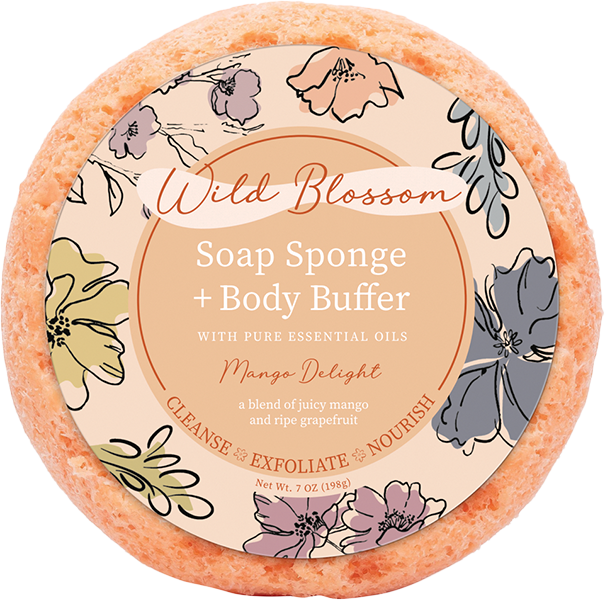Baby Boom
The forecast for eco-friendly juvenile products is looking up as the category matures past its infancy.
Whether they’re in the market for pink or blue, one thing is increasingly true: consumers are going for green when shopping for new arrivals. As a result, eco stores are starting to learn what traditional shop owners have always known: Baby products are the true rainmakers at retail.
Moms—and the gift-givers looking to shower them—see sustainable fibers, pure ingredients and upcycled materials as the healthiest choice for their children. “[Green products] are ideal for new baby,” says Liz Johnston, co-owner of The Greener Good boutique of Fort Worth, Texas. “A lot of moms don’t want to think of anything harsh coming into contact with their babies.”
 And each new baby that’s born brings an opportunity to win converts to the eco lifestyle as a whole. “My experience is that parents with new babies focus on safety and natural and organic for their babies when they wouldn’t have interest for themselves,” says Emily Becker-Whyte, director of sales at Gilsum, N.H.-based body care brand W.S. Badger Company. “It’s a gateway.”
And each new baby that’s born brings an opportunity to win converts to the eco lifestyle as a whole. “My experience is that parents with new babies focus on safety and natural and organic for their babies when they wouldn’t have interest for themselves,” says Emily Becker-Whyte, director of sales at Gilsum, N.H.-based body care brand W.S. Badger Company. “It’s a gateway.”
In some ways, baby products are opening the door to other categories in much the same way that organic foods did for the whole green industry. The interest snowballed when the planet gained one cheerleader in particular, according to Yaron Litwin, owner of Brooklyn, NY-based Kee-Ka Organics children’s wear and gifts. “I call it ‘the Gore effect’,” he says, crediting the former vice president’s film “An Inconvenient Truth” with creating a lightning-quick reaction. “When we launched our first organic collection, [retailers] at the trade show didn’t get it. Six months later, everyone was asking for organics.”
The inherent high quality of these goods also gives the category a boost, according to John Teuschler, vice president of sales at Greenpoint Brands, makers of Miyim dolls and storybook animals and the upcoming My Natural hard goods. “The whole green movement has more visibility now particularly after the recalls from a few years ago,” he says, referencing the avalanche of bad press some imported toys received in 2007. “As a result, people are looking for products that are safe, and green is safe.”
Shifting tides
 It was a very different story when Janice Masoud launched San Jose, CA-based Under the Nile Organics. Back then, she says, marketing her clothing collection as organic put her fledgling company on thin ice. “There were only three other organic baby clothes companies on the market when I launched in 1998, and they all offered oatmeal colors,” she recalls, adding instead of embracing her bright colors, stores gave it a frosty reception.
It was a very different story when Janice Masoud launched San Jose, CA-based Under the Nile Organics. Back then, she says, marketing her clothing collection as organic put her fledgling company on thin ice. “There were only three other organic baby clothes companies on the market when I launched in 1998, and they all offered oatmeal colors,” she recalls, adding instead of embracing her bright colors, stores gave it a frosty reception.
Things weren’t much better by 2005 when Kathleen Raulins went in search of a super-soft blanket for her son. Because the available options lacked color and a cool factor, she ultimately decided to start Moorpark, Calif.-based Lotus Bèbè, a collection of attractive, lush soy and bamboo blankets edged in satin trim.
Today, the tide has turned in favor of fashion. “A lot of times people are surprised that a product is organic because the quality and styling is so much more advanced than it used to be,” confirms Ginger Dhaliwal, owner of the Tiny Ginger children’s apparel and accessories showroom in New York.
In fact vendors say today’s consumer won’t purchase an item just because it’s made responsibly, which has prompted many brands to adopted an aesthetics-first mindset when marketing their wares. Josh Title, owner of Toronto-based Cate and Levi, says the fact that the company’s toys are made of reclaimed materials is a “bonus.” “We set out to put out a product that is compelling without the eco story,” he says. “We like to think they’re really cute, special, well made and well designed so you can buy without knowing they’re eco.”
Lifting the fog
 Anna Schwengle of the Montclair, NJ-based Finn + Emma baby line says there are still plenty of brands clouding the issue with so-called ‘green’ goods that aren’t. “There’s a lot of stuff out there that’s just smoke and mirrors,” she contends. “‘Organically grown’ or ‘natural’ doesn’t mean anything unless there’s a certification.” For Finn + Emma that means organic cotton that’s certified by the Global Organic Textile Standard (GOTS), which defines the environmental, supply chain and social criteria for organic textiles, as well as dyes that meet the Oeko-Tex Standard 100, which means the clothes are free of harmful substances like formaldehyde, PVC and phthalates.
Anna Schwengle of the Montclair, NJ-based Finn + Emma baby line says there are still plenty of brands clouding the issue with so-called ‘green’ goods that aren’t. “There’s a lot of stuff out there that’s just smoke and mirrors,” she contends. “‘Organically grown’ or ‘natural’ doesn’t mean anything unless there’s a certification.” For Finn + Emma that means organic cotton that’s certified by the Global Organic Textile Standard (GOTS), which defines the environmental, supply chain and social criteria for organic textiles, as well as dyes that meet the Oeko-Tex Standard 100, which means the clothes are free of harmful substances like formaldehyde, PVC and phthalates.
Many in the industry argue that third-party endorsements like these are the only way consumers can be sure they’re not falling for a scam. And it seems the government agrees. Last year, the USDA issued a policy memo that stated to legally use the label “organic” in the U.S., products must comply with the USDA’s National Organic Program (NOP) standards, which cover agricultural and post-harvesting practices. However, because the NOP post-harvesting standard is not applicable for finished textile products, these goods must be certified to GOTS standards in order to say the product is organic. (Read the Organic Trade Associations fact sheet for more information on proper labeling practices at http://www.ota.com/organic/fiber/What-are-Organic-Fiber-Products.html.)
As the North American representative for GOTS, a big part of Sandra Marquardt’s job is policing companies that make false claims. “Without a standard, anyone could say they have an organic product even though they’re putting toxic chemicals on during the finishing stage,” she says, adding that even with the policy in place, GOTS and the USDA have limited resources with which to track violators. That’s where consumer education comes in. “We want customers to ask questions like, is this certified to GOTS? What about the processing stages?”
While retailers agree that certifications make vetting vendors much easier, lack of certification doesn’t mean brands are frozen out of retail channels. For instance, Nest Natural Home in Clarksville, MD, doesn’t require a specific label in part because the owners recognize that certifications can be expensive. Managing partner Anastasia MacDonald says she has a pretty good barometer for weeding out would-be con artists. “If we ask deeply into the issues, we find the response and the way it’s delivered to be telling,” she says. “If they answer quickly and fully, you know they speak the language. If they’re confused by the question, that tells you what you need to know.”
Making sales a breeze
 Sheri Doyle, co-owner of eco-friendly baby store Franklin Goose in Richmond, VA, knows that while parents prefer green goods, that desire can be eclipsed by the need to stick to the budget. “There’s a lot of very expensive organic clothing out there but there’s a lot that’s reasonable. We have to be vigilant in our buying,” she says. “We sell our products for the same or less than Baby Gap.”
Sheri Doyle, co-owner of eco-friendly baby store Franklin Goose in Richmond, VA, knows that while parents prefer green goods, that desire can be eclipsed by the need to stick to the budget. “There’s a lot of very expensive organic clothing out there but there’s a lot that’s reasonable. We have to be vigilant in our buying,” she says. “We sell our products for the same or less than Baby Gap.”
Though the price of eco goods has historically had a cooling effect at retail, Dhaliwal of Tiny Ginger says that’s changing. “Organic goods do cost more but the price of organic cotton is leveling off,” she says. “Now we’re only seeing a $2 to $4 difference in wholesale prices between organic and traditional clothes.”
The larger price tag these products command is one reason vendors say they perform best when the sales staff can shed light on their features and benefits. “Above all, retailers need to know the product so they can answer customers’ questions,” says Teuschler of Greenpoint Brands, adding that’s why his company is focused on the specialty tier.
While Nest employees are readily available to customers, the store takes a much more relaxed approach to education than it used to. “We put away the soapbox,” says MacDonald. “In the early years, we coached the staff to be assertive about offering educational tidbits on the items and we had more signage. Now it’s about answering a [shopper’s] question in an informative but diplomatic way. No guilt trips.”
No matter how stores decide to merchandise these products, Schwengle’s forecasts continued growth if retailers remain enthusiastic: “Celebrate organic, and it will drive traffic.”
Mouse over images below to view.





























